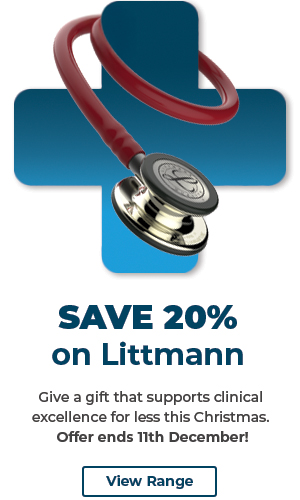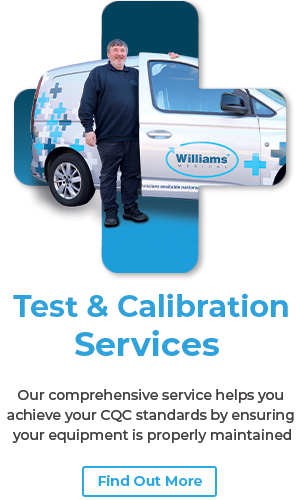If you cancel, all changes will be lost and the original order will remain unchanged.
E7 Oncoprotein Test Kit: Everything Health Care Professionals Need to Know
01/10/2025
Empower Patients with Fast, Reliable Cervical Cancer Screening and Peace of Mind
The E7 Oncoprotein Test is a new, rapid, and highly reliable cervical cancer screening tool designed to complement existing methods. Unlike Pap smears or HPV DNA tests alone, the E7 test directly identifies the cancer-driving protein that signals whether HPV infection is progressing toward precancer or cancer. For primary care professionals, this means earlier detection, fewer unnecessary referrals, greater reassurance for HPV-positive patients, and a faster, more efficient screening process.
Why Cervical & HPV Screening Needs Improvement
Cervical cancer is one of the most preventable cancers, yet gaps in current screening methods leave patients at risk. According to Cancer Research UK, survival rates exceed 90% when cervical cancer is caught early, while late-stage diagnosis drops treatment success rates to around 15%. Despite established screening programmes, many cases are still missed or detected too late due to the limitations of traditional testing:
• High-risk HPV infection is widespread (global prevalence ~8.8% for HR-HPV), but most infections do not progress to disease (MDPI).
• Pap smears (cytology) rely on morphological interpretation and are subject to human error and sampling limitations.
• HPV DNA or RNA tests confirm infection but cannot distinguish which cases are progressing toward precancer or cancer.
This is where the E7 Oncoprotein Test fills a critical gap. By detecting active oncoprotein expression linked to malignant transformation, it provides a complementary layer of diagnostic insight beyond Pap and HPV testing alone.
The E7 Oncoprotein Test delivers:
• Sensitivity: 93.75%
• Specificity: 91.3%
• Results in 15 minutes
Traditional methods remain valuable, but they leave important gaps in assessing progression risk. The E7 Oncoprotein Test steps in not as a replacement, but as a powerful complement, offering healthcare professionals faster, more precise results and clearer insight into a patient’s risk status.
What Is the E7 Oncoprotein Test?
The E7 Oncoprotein Test is a rapid diagnostic test designed to detect the E7 protein, an HPV-derived oncoprotein that plays a pivotal role in the progression from HPV infection to cervical precancer and cancer. Rather than simply identifying the presence of HPV DNA, the E7 protein test provides insight into whether the virus is actively driving malignant change.
E7 Cervical Cancer Screening Test:
• Is a rapid detection kit that quantitatively or semi-quantitatively measures expression of the E7 protein in cervical epithelial cells.
• E7 is a direct biomarker for oncogenic activity. Its presence suggests that the HPV infection is pushing toward cellular transformation, not merely existing as a benign or transient infection.
• Because E7 is mechanistically linked to the dysregulation of tumour suppressors (notably pRb), it represents one of the molecular “switches” by which HPV can move from latent infection toward neoplasia.
How It Works:
• A cervical sample (e.g. exfoliated cells) is collected, often similarly to how Pap/HPV tests are sampled.
• The assay uses immunodetection methods (e.g. antibodies, chemiluminescence, or other molecular immunoassay techniques) to bind and quantify E7 proteins present in the sample.
• The level of E7 expression is then compared against a threshold or calibrated scale to determine whether oncogenic activity is likely.
• Because E7 expression tends to increase as HPV-driven cellular transformation advances, the test can help distinguish which HPV-positive patients are at greater risk of progressing to high-grade lesions.
Notably, in a study of HPV16-positive women, the quantitative E7 oncoprotein assay showed an area under the ROC curve (AUC) of 0.817 for detecting high-grade lesions (Frontiers).
Who Is It For:
This test is intended for women in the approximate range of 18–70 years, especially those in higher-risk groups, including:
• Women with positive HPV DNA tests seeking further triage
• Women who have undergone surgery/treatment for cervical dysplasia or cancer and require monitoring
• Individuals with impaired immunity (e.g. HIV, immunosuppressive therapy)
• Women aged over 40, or those with a history of cervical disease
The test’s design is such that it can supplement existing screening strategies. It does not necessarily replace Pap or HPV DNA methods, but adds a layer of specificity by indicating active oncogenic transformation.
Where the E7 Protein Test Could Be Used:
• Hospital & Specialist Clinics: As part of colposcopy referral workflows or advanced screening programmes.
• Primary Care / GP Practices: In settings capable of point-of-care or near-patient testing, to aid early triage decisions.
• Physical Examination Centres or Women’s Health Clinics: As part of routine or enhanced screening protocols.
• Potential At-Home Testing Models: With suitable sample collection kits, the E7 test could be adapted for patient-administered sampling, enabling remote screening.
The E7 Oncoprotein Test brings molecular precision to cervical screening by identifying the active driver protein behind HPV-mediated transformation. Rather than just indicating presence of HPV, it helps to determine which infections are dangerous, making it a valuable complement to traditional Pap and HPV DNA testing.
How E7 Complements HPV & Smear Tests
Cervical screening today relies mainly on two methods: the HPV test, and the Pap smear test (cytology). While both remain essential, each has important limitations. HPV testing shows whether a high-risk virus is present, but it cannot reveal if the infection is progressing.
Pap smears detect abnormal cells, but interpretation is subjective and can miss early lesions. The E7 Oncoprotein Test complements both approaches by identifying whether the cancer-driving E7 protein is active, giving healthcare professionals a clearer view of a patient’s true risk.
The table opposite compares Pap smears, HPV DNA tests, and the E7 Oncoprotein Test to show how each method works, their accuracy, and their role in cervical cancer screening.
Unlike Pap smears and HPV DNA tests, which can leave uncertainty about progression, the E7 Oncoprotein Test identifies whether cancer-driving proteins are active. This gives primary care professionals clearer guidance on patient risk and next steps.
Clinical Benefits of the E7 Test
The E7 Oncoprotein Test offers both immediate clinical value for day-to-day general practice and a strategic advance in cervical cancer screening beyond Pap and HPV testing. For primary care professionals, it addresses long-standing challenges in efficient triage, patient care, and alignment with wider public health strategies.
Key Benefits for Primary Care Professionals:
| Feature / Test | Pap Smear (TCT) | HPV DNA Test | E7 Oncoprotein Test |
|---|---|---|---|
| What it Detects | Abnormal cell changes | Presence of high-risk HPV DNA | Expression of E7 protein (oncoprotein driving precancer/cancer) |
| Accuracy Limitations | Subjective; prone to false negatives | Shows infection but not progression risk | Directly indicates progression risk |
| Sensitivity | Variable (60–80%) | Higher than Pap but can miss progression | 93.75% |
| Result Time | Several days (lab dependent) | Several days (lab dependent) | 15 minutes |
| Use in Primary Care | Requires cytology lab analysis | Often referred out for processing | Can be performed in-practice or at home |
| Patient Impact | Anxiety if results are unclear | HPV+ without clarity on progression can cause anxiety | Provides reassurance or action plan based on active protein status |
• Time and cost efficiency: At-home or point-of-care testing reduces reliance on external labs and streamlines the patient journey.
• Supports NHS and WHO goals: Aligns with cervical cancer prevention strategies prioritising early detection and targeted care.
• Scalable testing: Fits easily into existing screening workflows and can adapt to more frequent monitoring of high-risk groups.
These advantages become even clearer when you look at how E7 supports everyday practice across specific areas of screening and patient care.
Early Detection & Prevention
One of the strongest benefits of E7 is its ability to highlight risks earlier than traditional methods. Cervical cancer often develops silently, with no symptoms until advanced stages, making early detection vital.
• Identifies women carrying progressing infections who may appear otherwise healthy.
• Flags potential precancerous changes earlier than cytology alone.
• Enables proactive monitoring and preventive interventions before disease escalates.
By catching changes earlier, E7 helps clinicians act sooner, supporting prevention strategies that reduce the likelihood of invasive disease.
Improved Triage & Diagnostic Accuracy
Beyond early detection, E7 also plays a critical role in improving diagnostic confidence and referral decisions. Traditional tests can leave uncertainty about which patients genuinely need escalation to secondary care.
• Refines triage pathways by showing whether oncogenic proteins are active.
• Helps separate low-risk from high-risk HPV-positive patients.
• Provides clinicians with stronger evidence when deciding whether referral to colposcopy or gynaecology is necessary.
This sharper triage capability helps ensure high-risk patients receive timely referrals while reducing unnecessary investigations for others.
Patient Reassurance
Screening is not only about clinical outcomes. Patient reassurance is equally vital, especially for women receiving HPV-positive results. Anxiety often arises when results don’t clarify whether progression is occurring.
• Provides clear answers on whether an HPV infection is progressing.
• Helps GPs deliver more personalised conversations and care plans.
• Reduces psychological burden while maintaining vigilance in follow-up.
By distinguishing between harmless infections and those of concern, E7 empowers clinicians to reassure patients without compromising safety.
Practical Benefits for GP Practices
In addition to clinical outcomes, E7 delivers operational benefits that make it easier to implement in primary care.
• Produces results in 15 minutes, enabling same-appointment decisions.
• At-home or in-practice testing reduces strain on laboratory services.
• Integrates easily into existing workflows, supporting opportunistic screening during routine visits.
By reducing administrative burden and improving turnaround times, E7 helps practices manage cervical screening more efficiently and sustainably.
Why E7 Is the Next-Generation Screening Standard
HPV and cytology remain valuable but neither directly measures oncogenic activity. E7 represents a step forward by.
• Measuring the biological process driving disease, not just the presence of infection or abnormal cells.
• Bridges the gap between infection detection and progression to disease.
• Positions screening to evolve in line with NHS and WHO targets.
As the only test that directly identifies cancer-driving protein expression, E7 sets a new benchmark for cervical screening and is well-placed to shape the future of prevention.
Who Should Test with E7?
When considering the role of the E7 Oncoprotein Test, it’s helpful to work alongside existing screening tools to refine who truly benefits most from this advanced assay. The following patient groups stand to benefit from E7 testing:
HPV-positive patients
Women who test positive for high-risk HPV but whose cytology is unclear or borderline. In such cases, E7 can help stratify risk and guide whether further investigation is warranted.
Women with a history of HPV infection
Even if prior HPV infections were deemed “cleared,” persistent or reactivated infections represent a risk. E7 testing can help flag those whose viral activity is progressing.
Post-treatment cervical disease patients
Women treated for CIN (cervical intraepithelial neoplasia) or early cervical cancer are at increased risk of recurrence. Most follow-up protocols rely on HPV “test of cure” 6–12 months post-treatment. If HPV remains positive, those women should be considered for E7 testing to help distinguish persistent malignant activity vs residual benign infection.
High-risk groups (older age, immunocompromised, or prior disease history)
Women over age 40, or those with suppressed immune systems (e.g. HIV, immunosuppressive therapy), or prior cervical disease history may benefit from more sensitive surveillance. E7 testing offers an extra layer of detection for those whose baseline risk is higher.
The E7 Oncoprotein Test is not intended for universal replacement of HPV/smear screening but serves as a targeted adjunct, especially valuable in patients whose HPV or cytology results leave uncertainty, or in whom recurrence risk is a concern.
How to Use the E7 Oncoprotein Test
The E7 Oncoprotein Test is designed for ease of use in both primary care and patient self-testing settings. Unlike a generic home HPV test, which only identifies viral DNA, the E7 test provides direct insight into whether an infection is actively progressing toward disease.
Step-by-Step Use
1. Take with a sterile swab cellular material from the ectocervix and cervical canal together with mucus.
2. Turn the bottle several times: top to bottom with the buffer solution before opening.
3. Insert the swab with the collected material into the bottle and rotate it 10 times, pressing it firmly against the sides of the tube. Remove the swab.
4. Cap the bottle and set aside for 10 minutes for the solution to stabilize. Remove the test cassette and place on a flat surface.
5. Get Pipette about 100 ml of the extracted sample.
6. Place 5 drops in the round window marked „S” on the test cassette.
7. Wait for 15 minutes.
8. Read the test results within 15 minutes
Practical Advantages:
• For primary care professionals: The test can be run during a single consultation, allowing immediate triage decisions and reducing reliance on lab turnaround times.
• For at-home use: With clear instructions and simple handling, the test can be performed by patients, who can then share results with their GP for interpretation and next steps.
With rapid results, straightforward handling, and compatibility in both clinic and at-home settings, the E7 Oncoprotein Test makes advanced cervical screening more accessible, efficient, and actionable than standard HPV self-tests.
FAQ’s
There are no universal guidelines yet, but E7 testing is most valuable when used to triage HPV-positive women or to monitor those at higher risk. Frequency should be based on clinical judgment and existing cervical screening intervals (e.g. every 3 years in women aged 25–49, every 5 years in those 50–64 in the UK) (NHS).
Yes, recent sexual activity, douching, or use of vaginal creams or medication may affect sample quality. It’s generally recommended to avoid these for at least 24 hours before a cervical screening test.
GPs can explain that Pap smears look for abnormal cells, HPV tests identify infection, and E7 testing shows whether that infection is actively causing harmful changes. Together, the three provide the clearest picture of cervical health.
A positive E7 result means oncogenic activity is present, and the patient should be referred for colposcopy or further investigation. GPs should reassure patients that early detection offers the best chance of successful treatment (>90% survival in early stages) (Cancer Research UK).
Conclusion
The E7 Oncoprotein Test represents a major step forward in cervical cancer screening. Combining speed, accuracy, and reassurance in ways that Pap smears or HPV DNA tests alone cannot. With results available in just 15 minutes, high sensitivity and specificity, and the ability to identify whether an HPV infection is actively progressing, E7 gives primary care professionals the clarity they need to act with confidence.
As the exclusive provider of the E7 Oncoprotein Test in the UK, Williams Medical Supplies is proud to deliver this next-generation tool directly to healthcare professionals. By integrating E7 into your screening pathway, you can improve patient reassurance, reduce unnecessary referrals, and align with NHS and WHO cervical cancer prevention goals.
Order your E7 Test Kits today and give your patients faster, clearer cervical screening results.
Disclaimer
This article is provided by Williams Medical Supplies for general information and educational purposes only. It is not intended to offer medical advice, diagnose health conditions, or replace professional clinical judgment. Healthcare professionals should continue to follow their organisation’s clinical protocols, national guidelines (such as those issued by NICE and the NHS Cervical Screening Programme), and individual patient needs when making screening or treatment decisions. Patients should always consult a qualified healthcare provider with any questions or concerns regarding their health.




